Anfield
| Capacity | 61 276 |
|---|---|
| Country | England |
| City | Liverpool |
| Clubs | Liverpool FC |
| Inauguration | 27/09/1884 |
| Renovations | 1886–1888, 1894, 1897, 1906–1907, 1928, 1957, 1962–1963, 1965, 1973, 1990–1992, 1994–1995, 1998, 2014–2017, 2021–2024 |
| Record attendance | 61,905 (Liverpool – Wolverhampton Wanderers 2–1, 02/02/1952) |
| Design | Archibald Leitch (1906), KSS Group (2014) |
| Address | Anfield Road, Liverpool, L4 0TH |
Advertisement
Anfield – stadium description
How does Anfield present itself in a nutshell?
Although today Anfield is unequivocally associated with Liverpool FC, the stadium's first host was The Reds' derby rival, Everton FC, which even won one English championship (1891) during the period the team played there.
However, after eight years, in 1892, Everton moved out to the other side of Stanley Park, where they built their new facility, Goodison Park. The owner of Anfield, who was left with an empty stadium, then created his own club: Liverpool FC.
Liverpool FC, over the years, has carved out a position for itself as one of the leading football clubs in the country. Today it is not only one of the most recognizable teams in England, but also around the world.
Liverpool's derby with Everton (Merseyside derby) is also popular. The rivalry between the two neighbors is one of the oldest and most famous in England, although it is not characterized by any particular antagonism.
W 2025, after 133 years, the famous neighborhood on both sides of Stanley Park came to an end, as Everton moved to a new stadium located on the banks of the River Mersey.
Since 1884, Anfield has gone from a modest pitch to one of the largest stadiums in the country. The first major expansion took place as early as 1906–1907, when, among other things, the famous The Kop stand was built behind one of the goals.
It was a stand different from the others, created on a huge rampart mounded up from the ground. It had standing room only, and tickets were among the cheapest, but the fans who came to it were famous for creating a unique atmosphere.
After the Hillsborough tragedy and the Taylor Report, The Kop had to be adapted to new standards. The earthen rampart was demolished and replaced with a modern, reinforced concrete stand. Although the tradition of The Kop continues, it is no longer the same as it once was.
Today, after expansions carried out between 2014 and 2024, much larger than The Kop is the stand located behind the other goal, as well as two stands along the pitch, including a huge main stand. The capacity of the stadium now is more than 61,000 spectators, almost equal to the attendance record of the old days (before the installation of plastic seats).
Interestingly, the famous and quite modern Anfield has... an undersized pitch. This was one of the reasons why the stadium was left out of the selection of venues for the 2028 European Championships. Anfield was also left out of the 1966 World Cup played in England, although four Euro 1996 matches were held there.
Anfield is also known for Liverpool FC's anthem, You'll Never Walk Alone, which is sung by fans before every game, as well as many other symbols, including memorials dedicated to two major tragedies involving Liverpool fans, at Heysel (1985) and Hillsborough (1989).
What is the history of Anfield?
How was Anfield established?
The origins of Anfield are associated with Everton FC. In 1884, Everton was forced to look for a new pitch because Mr. Cruitt, the owner of the ground where the club played its matches at the time (Priory Road) refused to continue the lease due to excessive noise during matches that disturbed the landlord.
A new plot of land was found nearby, in the southern corner of Stanley Park, between Anfield Road and Walton Breck Road. The land belonged to two brewers, brothers John and Joseph Orrell. The lease was arranged by John Houlding, also a brewer and owner of the nearby Sundon Hotel, which was subsequently used as the club's headquarters and changing rooms for the players.
The area has been used as a pasture until now, although cricket has also been played here. However, the installation of a football pitch at the site required a lot of work, which was undertaken by Everton FC officials, players, and supporters. The pitch was initially uneven, and the facility was equipped with only basic amenities and a small stand for officials, club members and press representatives.
The first match on the newly-arranged pitch was played on September 27, 1884 in the presence of about a thousand spectators. In a friendly clash Everton defeated Earlestown 5–0.
What were the first years of Anfield's operation?
A year after Everton moved to Anfield Road, the land with the pitch was bought by John Houlding, spending about £6,000, ⅔ of which came from a mortgage. Houlding leased the land to the club from then on, initially setting a rent of £100 a year. This was not an exorbitant amount, but in return Houlding wanted a say in decisions regarding the club's affairs.
On October 30, 1886, on the occasion of a match against Rangers from Scotland, the second stand was put into use. At the time, the club was recording attendances of 2,000-4,000 spectators, and at the maximum there could already be 10,000 fans around the pitch at Anfield Road. In the summer of 1887, the pitch was leveled and another stand was erected, behind the goal on the Walton Breck Road side. The stand cost £1,500 and had a standing capacity of 4,000.
The last, fourth stand (behind the goal on the Anfield Road side), similar to the one opposite, was opened on Boxing Day, December 26, 1888, on the occasion of a friendly match against Bootle.
How did Everton FC perform during the period it played at Anfield?
In 1888, Everton FC was one of the 12 founding clubs of the Football League. The first match at Anfield Road in the new competition took place on September 8, 1888 (Everton FC – Accrington FC 2–1). Already in the 1890/91 season, in the third edition of the Football League, Everton won the league, claiming the national championship title.
Everton was then the most popular club in England, with attendances regularly exceeding 10,000 spectators (the maximum capacity of the stadium reached 20,000). On March 2, 1889, the first match of the national teams was played at Anfield, in the British Home Championship (England – Ireland 6–1).
When was the first match played at Anfield under artificial lighting?
The first match under artificial lighting at Anfield took place on January 8, 1890. It was not yet modern electric lighting, but only makeshift illumination, consisting of kerosene lamps that were temporarily set up around the pitch. The friendly encounter between Everton and Sheffield United ended in a 5–2 victory for the hosts.
How long has Liverpool FC been playing at Anfield?
There was a growing dispute between Houlding and the Everton management over raising the rent and many other issues. Eventually, in 1892, Everton decided to move to the northern part of Stanley Park, off Goodison Road, where they rented a plot of land at a much lower rent (£50 a year) and built a new stadium: Goodison Park.
With Everton moving out, Houlding was left with an empty stadium at Anfield Road. So he decided to form his own club, which was to play matches at the facility. This is how Liverpool Football Club and Athletic Grounds Ltd (Liverpool FC) came into being. It is interesting to note that initially Houlding gave the club the name Everton, but to prevent duplication of the name of an already existing team, The Football Association did not agree.
What results did Liverpool FC achieve in its early years?
Liverpool FC began by playing in the Lancashire League. After winning this competition in its premiere season of 1892/93, it already participated in the Football League system from the next season, starting in the Second Division. In 1894, the first derby between Liverpool and Everton took place. In 1901 and 1906, Liverpool won its first league titles. In the interwar period, two more came, won in 1922 and 1923.
What investments were made at Anfield after the formation of Liverpool FC?
The success achieved in the early years and the relatively high interest in matches contributed to further investments at Anfield. At the beginning of the 1894/85 season, a new main stand was opened on the northwest side. The structure stretched along the entire pitch and had a roof supported by numerous supports. In the summer of 1897, the stand behind the goal on the Anfield Road side was roofed over.
When was the first major expansion of Anfield carried out?
A major rebuilding of the stadium took place during the summer break in 1906, after Liverpool won their second championship, and the plans were drawn up by Archibald Leitch, a famous Scottish architect who worked on many stadium projects in Britain and Ireland. The first match at the rebuilt Anfield took place on September 1, 1906, although work continued well into the 1907/08 season.
As part of the modernization, the main stand structure was moved to the opposite side. Where it had stood before (on the northwest side), a new main stand was built with a distinctive ornamental gable in the center section.
Behind the south goal, on the Walton Breck Road side, meanwhile, a large terraced stand based on an earthen embankment was built, capable of holding 20,000-25,000 spectators. A brick wall was also built around the stadium.
The new terraced stand was soon dubbed “The Spion Kop” by local journalist Ernest Edwards, in honor of a hill in South Africa over which a battle fought in the Second Boer War took place in January 1900. The name caught on, and the stand became known for its hot atmosphere and became part of the club's identity.
Since when has Liverpool FC owned Anfield?
John Houlding, the founder and first president of Liverpool FC and owner of the plot of land on which the stadium stood, died in 1902. The club became the owner of the site after buying it in 1907.
When was The Kop stand first modernized?
In 1928, The Kop stand was modernized. The auditorium was slightly enlarged and, most importantly, equipped with a huge gabled roof. A distinctive colonnade was also created on the outside, on which the canopy was partially based. The official opening of the modernized The Kop took place on August 25, 1928, and was inaugurated by John McKenna, then president of the Football League and former Liverpool president and coach.
The Kop was the largest stand of its kind in the country and the largest covered terraced stand in Europe. The addition of the roof heightened the acoustic experience, making the atmosphere in the stadium even more vibrant.
When was the attendance record set at Anfield?
On February 2, 1952, during an FA Cup match against Wolverhampton Wanderers, an unbeaten attendance record at Anfield was set. The game, which ended in a 2–1 victory for the hosts, was watched from the stands by 61,905 spectators.
When was the first proper floodlighting built at Anfield?
In 1957, at a cost of £12,000, the first proper artificial lighting was installed at Anfield. At the time, four masts with electric-powered floodlights were erected in the corners, which were about 65 feet above the pitch.
Since at the same time the lighting was also installed at Everton's venue, Goodison Park, it was decided to inaugurate the jupiters at both stadiums through a friendly double-leg match, which by the way also celebrated the 75th anniversary of the Liverpool County FA.
The first to have its inauguration was the lighting at Goodison Park, on October 9, 1957 (Everton's 2–0 win). The rematch and debut of the jupiters at Anfield took place on October 30, 1957 (this time Liverpool won 3–2, but the victory in the mini-tournament – better goal balance – went to Everton).
How was Anfield expanded in the 1960s and 1970s?
After the 1961/62 season, which saw Liverpool FC return to the First Division, the old stand along the side of the pitch facing Kemlyn Road was demolished (this stand was built in 1894 as the main stand, and was moved to the opposite side as part of the 1906 modernization).
The previous stand at Kemlyn Road was replaced, at a cost of £350,000, by a new, larger stand with a capacity of 6,700 spectators, which opened in 1963, and was fitted with a gabled roof with large haunches, and a rack of floodlights was erected above it. The stand behind the goal on the Anfield Road side was also rebuilt in 1965.
Another modernization involved the Main Stand. The old stand, designed by Archibald Leitch in 1906, was expanded and a new roof was erected over it. The inauguration after the expansion took place on March 10, 1973 in the presence of Edward, Duke of Kent. The lighting masts were also eliminated on the occasion, after floodlights were installed at the edge of the roof.
What results did Liverpool FC achieve after World War II?
In the 1946/47 season, the first played after World War II, Liverpool won its fifth national championship. In 1954, however, they suffered a relegation to the Second Division, and did not return to the elite until 1962. Immediately after promotion to the First Division came a streak of success that lasted until the early 1990s.
Liverpool reached for a succession of trophies during this time, including the English championship, the FA Cup, as well as triumphs in European competitions. Famous at the time was the charismatic coach Bill Shankly, who launched the team's upward march, followed also by his successors Bob Paisley, Joe Fagan and Kenny Dalglish.
When did the song You'll Never Walk Alone become Liverpool FC's anthem?
In 1963, Liverpool-based group Gerry and the Pacemakers released a cover of the song You'll Never Walk Alone (originally from the 1945 musical Carousel), which quickly became a hit and was also adopted by Liverpool fans, becoming a recognizable anthem for the club.
How was Anfield modernized in the 1980s and 1990s?
An expansion of the Kemlyn Road Stand had been planned since the 1970s. To make the project possible, the houses standing in the immediate vicinity of the stand had to be demolished. The club began buying them out, but the last residents were persuaded to move out only in 1990, and then work began.
The stand was modernized and expanded by adding a second floor, equipping it with boxes and bars, and increasing its capacity to over 11,000 spectators. The grand opening of the expanded stand was performed by then UEFA President Lennart Johansson. The inauguration took place on September 1, 1992, exactly 100 years after Liverpool's first match at Anfield, and as a result the stand was renamed the Centenary Stand.
From the early 1980s, more and more seats were gradually installed. As the first, seats were installed in the lower part of the main stand and in the Anfield Road Stand.
Although Liverpool's dominant color is red, and that is also the color of the stadium's seats, for a time some sectors were equipped with seats of various colors. This was reportedly the idea of then-coach Bob Paisley, who said it would help him distinguish between players during training (the red seats would mix with the red color of the shirts).
After the 1989 Hillsborough tragedy and the famous Taylor Report, regulations were passed in England ordering clubs to eliminate standing room by the start of the 1994/95 season at the latest, and as a result, the stands at Anfield were also equipped with seating only.
The last to lose standing room was The Kop stand. It was built in 1906 to a design by Archibald Leitch, and was expanded in 1928, and in this form it has survived without major changes for the following decades. Over the years, the stand became part of the club's identity and was known for its hot atmosphere. However, the match against Norwich City, played on April 30, 1994, was its last in its previous form, and fans on that occasion arranged an emotional farewell to it.
After the match against Norwich City, the stand was demolished, along with the earthen embankment on which it still rested, and was replaced by a new single-story reinforced concrete structure with more than 12,000 seats, completed in 1995.
In 1998, the Anfield Road Stand was expanded to include a second tier. Since it was noticed that the structure was unstable, the new upper section was reinforced in 2000 by adding additional supports.
How was Anfield expanded in the 21st century?
Rather than expanding Anfield, could Liverpool FC have received a new stadium?
At the turn of the 20th century, the stadium could hold around 45,000 spectators, which was certainly not the peak of its capacity for a club with such an established brand and potential. From the early 21st century, therefore, serious discussions began on the construction of a new stadium, larger and more modern, to stand nearby, at Stanley Park.
The first concept was prepared by Manchester-based studio AFL Architects. The project even received a building permit, but due to lack of funds, it was not realized. Meanwhile, the city authorities proposed building a single, shared stadium, which Liverpool FC was to share with Everton FC, but the clubs were not keen on the proposal.
In the meantime, Liverpool FC's ownership has changed. The club, which had remained in the hands of the Moores family for many years, was sold in 2007 to American businessmen George Gillet and Tom Hicks, who in turn sold it in 2010 to the American Fenway Sports Group (until 2011 as New England Sports Ventures).
Under Gillet and Hicks, a new stadium concept for Liverpool FC was prepared by American studio HKS. Subsequently, there were further visions/variants developed by the AFL and HKS. The stadium was to hold 55-60,000 spectators, with the possibility of expansion to 73,000.
However, after the club was taken over by Fenway Sports Group, the new owners began to consider staying at Anfield, and eventually found it to be the preferred solution. One of the leading arguments given was the desire to preserve the atmosphere of the stadium and The Kop stand, which may no longer have been recreated properly at the new facility. In exchange for abandoning plans to build a new stadium, the intention was to expand Anfield.
What did the Anfield expansion in the 21st century included?
The expansion of Anfield included a major enlargement of two stands: the main stand and the stand behind the north goal (Anfield Road End). The expansion of the main stand was undertaken first. To make this possible, the demolition of many houses behind this stand was carried out.
Modernization of the main stand began in late 2014, and it was fully ready to receive spectators at the beginning of the 2016/17 season (work on the interior continued until April 2017). The expansion increased the capacity of the entire stadium to nearly 55,000 spectators.
In addition to the expansion of the auditorium, a new main club store was built around the corner of The Kop and the main stand. Its construction began in late 2016, and it opened on August 14, 2017. The store occupies a separate building and has an area of 19,500 ft².
The second phase of the Anfield expansion, the enlargement of the Anfield Road End, began in September 2021 and was completed in 2024. The expansion increased the capacity of the entire stadium to more than 61,000 spectators, approaching the attendance record achieved before the installation of seats in the stands.
We present the Anfield expansion project and an account of the work carried out between 2014 and 2024 on separate subpages
What results has Liverpool FC achieved since the 1990s?
After a streak of successes recorded from the 1960s to the early 1990s, the frequency of trophies won by Liverpool has somewhat diminished, although it has continuously remained among the top English and European clubs, as evidenced, for example, by triumphs in the Champions League in the 2004/05 and 2018/19 seasons. However, fans of The Reds had to wait until the 2019/20 season for their first English championship title since 1990 (and 19th in history).
What are the characteristics of Anfield?
The stadium consists of four interconnected stands, located on each side of the pitch. After the expansions of 2014–2017 and 2021–2024, the Main Stand and Anfield Road Stand dominate its size.
The Main Stand is located on the northwest side. The stand behind the north goal is called the Anfield Road Stand/Anfield Road End. Opposite the Main Stand is the Sir Kenny Dalglish Stand, and the stand behind the goal on the Walton Breck Road side is the famous The Kop. The capacity of the stadium is more than 61,000 spectators, ranking among the largest in England.
The stands are equipped with red folding seats and are fully covered. The facility also offers exclusive boxes and premium bars and restaurants, as well as dedicated seating for the disabled. Food and drink stands, a prayer room and restrooms are available in the stadium. Only cashless payments are valid within the facility.
Although each of the stands has a distinct form, they all have a similar style. The exterior is notable for its brick walls, characteristic of local architecture. The stands are crowned by a canopy with light gray tin sheathing. The newly expanded stands have glazed sections at the ends of the roof.
What are the dimensions of the pitch at Anfield?
Anfield is a football-specific stadium, dedicated primarily to its host, Liverpool FC. The stadium's pitch has a hybrid turf and playing field dimensions of 101 × 68 meters and is 4 meters shorter than the commonly accepted standard of 105 × 68 meters.
The short pitch is not a subject of objection in the Premier League, but it is already causing problems for the possible organization of major international competitions and was one of the reasons Anfield was left out of the designation of venues for Euro 2028.
Extending the pitch is a possibility, although it would require reconstruction and the removal of the lower rows of stands behind the goals. The club's owners have so far not deemed such a step necessary.
Is it possible to take a tour of Anfield?
Anfield offers a guided tour of the stadium. During the tour you can visit the stands, players' locker rooms and various other premises, as well as visit the club's museum and learn interesting facts about the history of the stadium and Liverpool FC.
Where did the name Anfield come from?
The name of the stadium, Anfield, came from the name of the area in which it is located. The word is derived from Old and Middle English and means a field situated on a slope. The name Anfield, or its variants (Hongfield, Annfield, Annefield), has been associated with the area since at least the mid-1700s. The street encircling the stadium on the northeast side is called Anfield Road (hence the name of the stand located on that side: Anfield Road Stand/Anfield Road End).
How is Anfield located?
The stadium is located about 2 miles (3 km) north of Liverpool's city center. The facility is located adjacent to Stanley Park, on the opposite side of which sits the stadium of The Reds' derby rival Everton (Goodison Park). The two stadiums have been adjacent to each other since 1892, but as of 2021, construction is underway on a new Everton stadium, which is being built in a different location, at Bramley-Moore Dock, on the Mersey River waterfront (it is scheduled to open in 2025).
Around the corner from The Kop and Main Stand is the new (opened in 2017), major club store – LFC Superstore. The store occupies a separate building, and the square between it and the stands is called Paisley Square.
How do the different stands at Anfield look like?
Main Stand
The Main Stand is the largest of all the stands at Anfield. It is divided into three floors and can accommodate more than 20,000 spectators, being the largest such stand in England. The rooms underneath the stand contain extensive facilities, including the club's offices and players' locker rooms.
The first main stand at Anfield was built in 1886 and was a small, covered structure. In 1906, it was moved to the opposite side to be replaced by a new, larger stand, the roof of which in the middle section was embellished with a distinctive decorative gable. The old roof survived until the 1973 modernization, and the original structure, designed by Archibald Leitch in 1906, is partially preserved today and makes up the lower floor of the modern stand.
Main Stand received its current form after a major expansion from 2014–2017, when the current second and third floors were added. Along with the new parts of the auditorium, a new roof was also built. It is supported by a huge truss and has an interesting modern form thanks to an aesthetically pleasing glazed section at the end and side slants.
Anfield Road End
The first stand behind the goal on the Anfield Road side (northeast) was built in 1888, with a canopy also added in 1897. The stand underwent reconstruction in 1965 and in 1998, when a small second floor was built.
In 2021, a major expansion of the stand began, similar to the one the main stand underwent a few years earlier. The stand expansion continued until 2024, with a tall second floor of the auditorium and a new roof, similar in form to the canopy on the main stand. The capacity of the Anfield Road End is about 16,000 spectators.
Sir Kenny Dalglish Stand
The two-story stand located opposite the main stand holds just under 12,000 spectators. It features exclusive boxes, as well as TV stands or a police operations room. The lower part of the stand was built in 1963, while the upper floor is the result of an expansion completed in 1992.
The stand was formerly called the Kemlyn Road Stand (after the street running behind it). When it was expanded to include a second floor, the re-inauguration took place on September 1, 1992, exactly 100 years after Liverpool's first match at Anfield, and the stand was then called the Centenary Stand. In 2017, the stand was renamed the Sir Kenny Dalglish Stand, in recognition of the former Liverpool FC coach.
Historically, the first stand at this location was built at the very beginning of Anfield's existence, in 1884, although it was originally just a small structure for officials, club members and press representatives. In 1906, the existing main stand was moved here, and it survived until a new stand was built in the early 1960s.
The Kop
The first stand behind the goal on the Walton Breck Road (south) side was built in 1887, but the history of the famous The Kop begins in 1906. In the summer of that year, after Liverpool FC won its second championship, a major redevelopment of Anfield took place, the plans for which were drawn up by renowned stadium architect Archibald Leitch.
At the time, a massive terraced stand based on an earthen rampart was built, which had 132 steps, accommodating some 20,000-25,000 fans (all standing room).
Shortly after the terraced stand opened, a local journalist, Ernest Edwards, writing for the Daily Post and Liverpool Echo, christened it “The Spion Kop”, in honor of the hill in South Africa over which a battle fought in January 1900 as part of the Second Boer War took place and in which many soldiers from the Liverpool area took part.
It was not the only or even the first stand to be nicknamed “The Spion Kop” (“The Kop”, “Kop Stand”), but it became by far the most famous among those bearing the name. Offering the cheapest tickets in the stadium, it was home to the staunchest supporters (the so-called “Kopites”) who created an extraordinary atmosphere during matches. It was undoubtedly something special and over time became an integral part of the club's identity.
In 1928, The Kop was modernized. The auditorium was slightly enlarged and covered with a huge roof, and a distinctive columnar façade was created on the outside. The addition of the roof heightened the acoustic experience, making the atmosphere in the stadium even more lively.
In July 1987, a section of the stand collapsed. The incident didn't cause any casualties (it didn't happen during any match), but it meant that Liverpool FC had to play its first three matches of the new season away from Anfield.
The Kop was the center of Liverpool FC's fan life. After the 1989 Hillsborough tragedy, in which fans of The Reds died, photos of the stand covered in a sea of flowers, T-shirts, flags and scarves, with which it was decorated in memory of the victims, circulated the world.
After the 1928 modernization, the stand survived largely unchanged for decades to come. Changes came only in the 1990s, when, following the Hillsborough tragedy, the elimination of standing room was enforced in England. Instead of simply installing seats, it was then decided to completely rebuild The Kop.
Between 1994 and 1995, the existing stand, including the earthen embankment, was demolished and replaced by a completely new reinforced concrete structure, with a new roof and just under 13,000 seats – the shape we still see it in today. And while the tradition of The Kop continues, its atmosphere can no longer compare to what it was until 1994.
What details and curiosities at Anfield are worth paying special attention to?
Shankly Gates and Paisley Gateway
Surrounding the stadium are two ornate gates commemorating two distinguished Liverpool FC coaches, Bill Shankly and Bob Paisley, named Shankly Gates and Paisley Gateway, respectively. The gates were built in 1982 and 1999.
The Shankly Gates is located in the eastern corner, at the Anfield Road Stand and Sir Kenny Dalglish Stand (originally the gate stood at the corner of the Anfield Road Stand and Main Stand, its location was changed in 2016). The distinctive feature of this gate is the “You'll Never Walk Alone” sign. The gate was inaugurated on August 26, 1982, less than a year after Bill's death, and the ceremonial opening was performed by his widow, Nessie Shankly.
The second decorative entrance gate, dedicated to Bob Paisley (Paisley Gateway), who died on February 14, 1996, was put into service on April 8, 1999, with the ceremonial opening performed by Bob's widow, Jessie Paisley. The gateway stood in front of the new The Kop stand, on Walton Breck Road. A feature of the gate are three European Cups symbolizing Liverpool's three victories in these competitions under Paisley.
Bill Shankly Statue and Bob Paisley Statue
Next to Anfield are two statues dedicated, like the two decorative gates, to two distinguished Liverpool FC coaches, Bill Shankly and Bob Paisley.
The Bill Shankly statue is located in front of The Kop stand. It was unveiled on December 4, 1997, and was designed by Tom Murphy. The statue depicts Bill Shankly in a triumphant pose, with a club scarf around his neck and his hands raised in the air. The pedestal bears the inscription “he made the people happy”.
The Bob Paisley statue is located next to the club's new store, in Paisley Square, and was unveiled on January 30, 2020. The sculpture was created by Andy Edwards. The statue depicts a scene from a 1968 match against Tottenham Hotspur, in which Paisley is carrying injured player Emlyn Hughes (later captain of The Reds) on his back.
Flagpole
At the south corner of the stadium (by the Sir Kenny Dalglish Stand and The Kop) is a 50-foot-tall, white-painted flagpole. The flagpole comes from the steamship SS Great Eastern, launched in 1858 as the largest ship in the world and cut up for scrap near Liverpool in 1889. The corner where the flagpole stands is called “Flagpole Corner”.
The pole was erected at the stadium in 1891, and was purchased by Everton FC, which resided at Anfield at the time. However, the club did not take it with them when they moved to the new stadium a year later.
Memorizing the victims of the great tragedies at Heysel and Hillsborough
Liverpool FC's history is linked to two infamous tragedies involving fans, which occurred at the stadiums: at Heysel (1985) and at Hillsborough (1989).
The first of these tragedies took place on May 29, 1985 at the Stade du Heysel in Brussels, before the European Cup final against Juventus Turin. Liverpool fans behaving aggressively at the time broke into the Juventus sectors, starting brawls and causing panic. Fleeing fans of the Italian team trampled each other. The incidents led to the deaths of 39 people.
After the riots, English clubs were excluded from European cups for several years. Liverpool fans later made conciliatory gestures toward Juventus fans. On May 26, 2010, three days before the 25th anniversary of the tragedy, a memorial plaque honoring the dead fans was unveiled at the Sir Kenny Dalglish Stand (then the Centenary Stand).
The second tragedy occurred on April 15, 1989 at Hillsborough Stadium in Sheffield. It occurred as a result of a stampede in the tunnel leading to the stands. This time the victims were Liverpool fans. Including those who died in the aftermath of the incident, the death toll is considered to have been 97.
On April 21, 1990, before a league match against Chelsea, a memorial was unveiled to commemorate the fatalities of the Hillsborough tragedy. A feature of the memorial is an eternal fire. The monument originally stood at the Shankly Gates; in 2016 it was moved to the façade of the then-expanded Main Stand. A “survivors‘ bench” was also unveiled next to the monument on April 12, 2024.
This Is Anfield
Anfield has many details with some stories and anecdotes associated with it. One of the most famous is the “This Is Anfield” sign located in the players' tunnel. It was placed by coach Bill Shankly, at the suggestion of one of the club's employees, Danny Dwyer.
The sign, Shankly explained, is meant to remind Liverpool's players who they are playing for and their rivals who they are playing against. Over time, it acquired the status of a club talisman, and it became a tradition for The Reds footballers to touch it when going out to play, which was supposed to bring them good luck.
After the main stand was rebuilt and a new players' tunnel was created in 2016, the sign was again hung near the new exit to the pitch. Jürgen Klopp, who took over as the club's coach in 2015, made a rule that only players who had already won a title with Liverpool could touch the sign.
Boot Room
The Boot Room was a modest room near the players' locker room, originally designed to store football boots. During Bill Shankly's tenure as Liverpool coach, the room evolved into an informal meeting place for coaches to discuss team matters and tactics for upcoming games. Over time, the Boot Room became known not only within the club, but throughout the football community.
The room operated from the 1960s until the early 1990s. It was decommissioned in 1993 to make room for a conference room. Members of the staff who attended Boot Room meetings later took up the post of Liverpool head coach themselves: Bob Paisley, Joe Fagan, Kenny Dalglish and Roy Evans.
How is Anfield used?
Anfield primarily serves the Liverpool FC team, which has played there continuously since 1892. Prior to that, Everton FC hosted the stadium from 1884 to 1982.
Liverpool FC is now one of the most successful and recognizable English football clubs. The team has made a global brand over the years, owning numbers of fans around the world, and is listed at the top positions in the rankings of the most valuable football teams.
Like many other English stadiums, Anfield regularly fills up during its team's games. Playing in front of its home crowd is Liverpool FC's undoubted strength: the team has recorded long series without defeat at its home stadium, with the longest of them lasting from February 1978 to January 1981 and from May 2017 to January 2021 (including a series of 24 home victories between February 2019 and July 2020, which broke the Premier League record).
What events, other than FC Liverpool matches, take place at Anfield?
The venue has occasionally hosted international fixtures, mainly with the English national team as hosts (the first England match at Anfield took place on March 2, 1889 – a 6–1 win against Ireland). Three “home” matches were also played here by the Welsh national team. In addition, the stadium was one of the venues of Euro 1996, hosting three group stage matches and one quarterfinal.
The stadium was omitted on the occasion of the 1966 World Cup, which was played in England, while some of the matches were instead held then at the nearby Everton venue, Goodison Park. Similarly, on the occasion of Euro 2028, which will be held in Great Britain and Ireland, some matches will be played not at Anfield, but at Everton's new stadium.
Occasionally, women's football matches, rugby league, boxing duels, tennis or even basketball competitions are also held at Anfield. In the 1920s, a marathon finish was held here. The stadium also hosts a variety of cultural events, including music concerts or religious ceremonies.
How Anfield compares to other Premier League stadiums?
Advertisement
Pictures
-

12.01.2025 © CP OVERVIEW 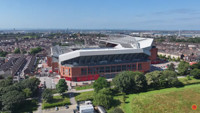
01.08.2024 © CP OVERVIEW 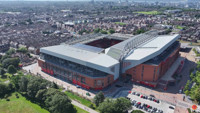
01.08.2024 © CP OVERVIEW 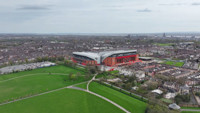
12.04.2024 © Mister Drone UK 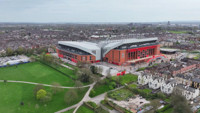
12.04.2024 © Mister Drone UK 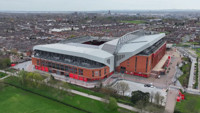
12.04.2024 © Mister Drone UK 
14.08.2024 © Mister Drone UK 
15.09.2024 © CP OVERVIEW 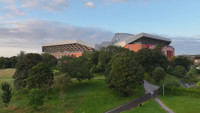
17.08.2024 © Mister Drone UK 
16.11.2024 © CP OVERVIEW 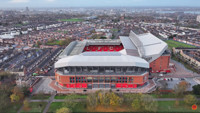
16.11.2024 © CP OVERVIEW 
15.09.2024 © CP OVERVIEW 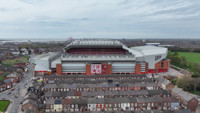
12.04.2024 © Mister Drone UK 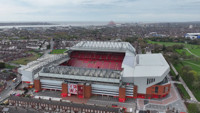
12.04.2024 © Mister Drone UK 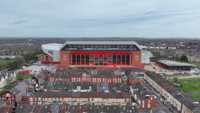
12.04.2024 © Mister Drone UK 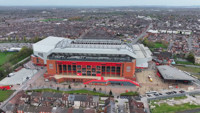
12.04.2024 © Mister Drone UK 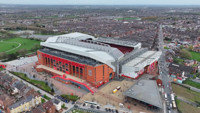
12.04.2024 © Mister Drone UK 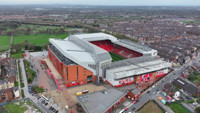
12.04.2024 © Mister Drone UK 
12.04.2024 © Mister Drone UK 
12.04.2024 © Mister Drone UK 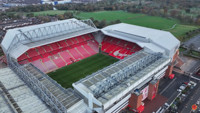
16.11.2024 © CP OVERVIEW 
17.10.2024 © CP OVERVIEW 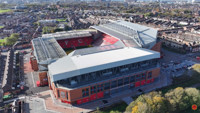
27.10.2024 © CP OVERVIEW 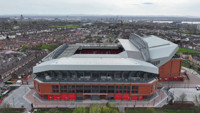
12.04.2024 © Mister Drone UK 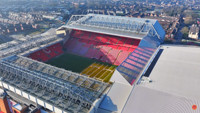
12.01.2025 © CP OVERVIEW 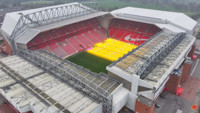
12.12.2024 © CP OVERVIEW 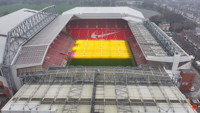
12.12.2024 © CP OVERVIEW 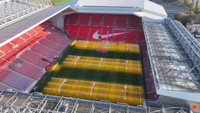
24.10.2024 © CP OVERVIEW 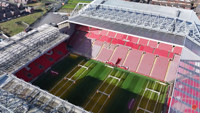
27.10.2024 © CP OVERVIEW 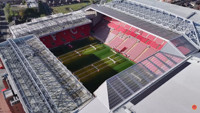
27.10.2024 © CP OVERVIEW 
16.11.2024 © CP OVERVIEW 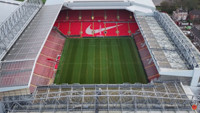
16.11.2024 © CP OVERVIEW 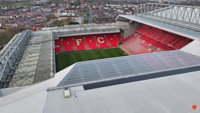
16.11.2024 © CP OVERVIEW 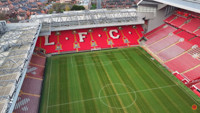
16.11.2024 © CP OVERVIEW 
16.11.2024 © CP OVERVIEW 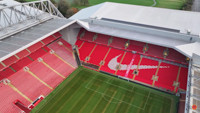
16.11.2024 © CP OVERVIEW 
2017 © Liverpool FC 
19.01.2020 © Sławomir Nosal 
23.06.2020 © Sławomir Nosal 
29.08.2016 © Paul Townley 
10.09.2016 © Liverpool FC 
05.10.2011 © Andrew Dawson 
05.10.2011 © Andrew Dawson 
07.10.2012 © Chris Homer 
30.09.2012 © Bruce Stokes (cc: by-nc-sa) 
20.10.2012 © Ivan PC (cc: by) 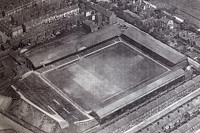
1906 ©
2016–2021:
1998–2014:
1906–1928:
Related news
2025
-
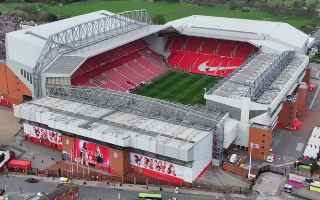
England: Liverpool prepares to modernise Anfield surroundings
Residents, business owners, and road users are invited to share their opinions on a £5 million proposal to transform the area around Liverpool FC’s stadium. The proposed changes are part of the broader Anfield Spatial Regeneration Framework (SRF), aiming to create a greener, safer, and more inclusive public space.
-
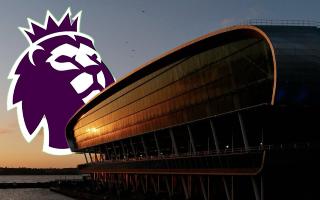
England: Premier League's 50,000+ seat stadiums after Everton's new ground opens
The Premier League is home to some of football’s biggest stages, where fans create unforgettable atmospheres. Everton’s new stadium joins the ranks of venues with 50,000+ seats. Discover the full list of English football giants.
-

England: Liverpool to commemorate 40th anniversary of Heysel Tragedy
Liverpool FC has announced the creation of a new memorial at Anfield to mark the 40th anniversary of the Heysel Stadium tragedy, which occurred on May 29, 1985, before the European Cup final in Brussels. As a result of a wall collapse, preceded by riots and a charge by Liverpool supporters towards Juventus fans, 39 people lost their lives and around 600 were injured.
-
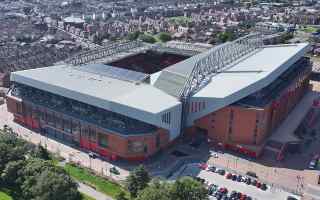
England: Anfield expansion officially completed – Anfield Road Stand with safety certificate
Liverpool FC has completed a major stage in the expansion of Anfield stadium. Work to enlarge the Anfield Road Stand by an additional 7,000 seats began in 2021. However, the project faced a serious setback in 2023 when the main contractor, Buckingham Group, went into administration, delaying the reopening of the stand to supporters.
-
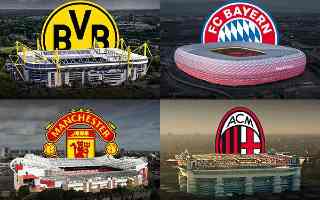
UEFA: 2. Bundesliga ahead of Arsenal and Atletico! Surprising attendance figures in Europe
Who attracts the biggest crowds to their stands, and who unexpectedly falls short of the numbers needed to make the top ranks? The latest attendance report for European leagues in the 2023/24 season provides the answers.
-
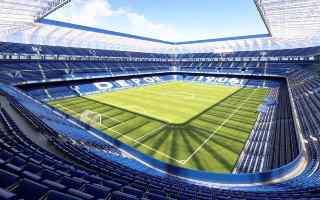
World Cup 2030: Coruña wants an Anfield-style Riazor
Anfield-style stands, a seating capacity similar to Reale arena and a model copied from the Bernabéu. The Coruña City Council is giving clues about the details of the new Riazor project, but the financing and the final design are still unknown. And time is against them.
2024
-
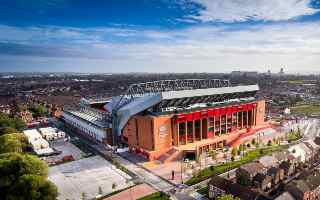
England: Joint protest by Premier League fans against ticket price increases
This Sunday, during Premier League matches at Old Trafford and Anfield, supporters of four clubs - Manchester United, Liverpool, Everton and Manchester City - will unite to protest against rising ticket prices. The protest will be held under the slogan: "Enough is enough - stop exploiting loyalty".
-
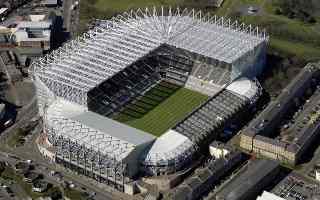
England: Will government introduce new rules on stadium sales?
The government is preparing to grant powers to an independent regulator that will prevent Premier League clubs from selling their stadiums to affiliated companies or third parties.
-

England: Attendance at Premier League stadiums in the 2023/24 season
Another season, another league title for Manchester City. The award for highest attendance also went to the city of Manchester as well, but to the Red Devils, despite the team's worst season in Premier League history. As many as six clubs surpassed one million spectators this season, with five stadiums filling up at an average of more than 99%. Amazing.
-

Europe: Which stadiums generate the most revenue in Europe?
A UEFA report published some time ago analyses the state of football clubs in Europe and their financial performance in 2022 and 2023. It did not lack stadium statistics. How did European arenas perform?
-

England: Will Anfield Road Stand change its name?
The expansion of the Anfield Road Stand is nearly complete. Liverpool's commercial director, in an interview for The Athletic, admitted that the club is considering selling the naming rights to the stand. But what about the name of the entire stadium?
-

England: Could Liverpool have done better? Abandoned spectacular plans
The end of Anfield's renovation is slowly approaching. Work is still underway to increase capacity to 61,000 spectators. However, memories in Liverpool are reverting back to events from 17 years ago...
-

England: Will Manchester United leave Old Trafford?
The Red Devils dream of a modern stadium, but due to the age of the installations and the complex surroundings, a major upgrade is not an option. The stadium will have to be built from scratch and the club will have to move out. What are its options?
-

England: Well-known portal has chosen 100 best stadiums. There are surprises
FourFourTwo, a sports-dedicated portal, has selected the 100 best stadiums in Great Britain. As the author of the list ironically stated, "We’re convinced there’ll be absolutely no arguing about it…”. So, let's take a look at which stadiums made it into the ranking.
2023
-

England: Record attendance at Anfield becoming more likely
The upcoming match at Anfield Road for Liverpool could gather a record number of spectators. Everything depends on the success of tests scheduled for Monday evening, which will determine the possibility of opening the upper tier of the Anfield Road Stand.
-

England: Anfield Road Stand not set to open this year
Liverpool's stadium upgrade, which began in September 2021, has caught a significant delay. The enlarged stand on the Anfield Road side of the ground was due to be ready for the start of the 2023/24 season, but it has still not been fully opened to fans. We now know that this will definitely not happen in the current calendar year.
-

EURO: Great stadiums overlooked for selection of EURO 2028 and EURO 2032 venues
A number of stadiums had a chance to host EURO 2028 and EURO 2032. Three of them were not selected, even though they stand out for their history and importance. Why? See the two English stadiums and one venue from Turkey that were left out.
-

England: Anfield tour shines with Tripadvisor's Travelers' Choice Award
Liverpool FC's iconic Anfield stadium tour has once again been spotlighted, securing a place in Tripadvisor's 2023 Travelers' Choice top 10% of global attractions. LFC stadium tour provides two engaging options for visitors.
-

England: Liverpool to lose millions due to delays at Anfield Road End
The slippage picked up by the redevelopment of the stand at Liverpool's home ground means that significantly fewer fans could attend the Reds' matches. With the enlargement of the stand on the Anfield Road side, the stadium's capacity is due to exceed 60,000 spectators. Meanwhile, it is currently significantly reduced and Liverpool is losing money.
-

England: Liverpool and Everton unite after tragedy
On Saturday, at Anfield, Liverpool fans offered a heartfelt tribute to Michael Jones, an Everton supporter who tragically lost his life during construction work at Everton's new stadium.
 StadiumDB
StadiumDB